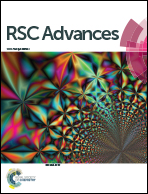Tuning the crystal shape of materials by chemical potential: a combined theoretical and experimental study for NiSe2
Abstract
Understanding and controlling the shape of materials has attracted considerable attention over the past few decades. Taking a typical transition metal chalcogenide NiSe2 as an example, we have figured out the role of chemical potential in the equilibrium shape of materials by a combined theoretical and experimental study. The theoretical equilibrium shape evolution of NiSe2 with chemical potential has been investigated using ab initio atomistic thermodynamics and Wulff construction. Moreover, in order to confirm our theoretical results, a series of NiSe2 crystals with different morphologies were also synthesized via a solvothermal route in mixed solvents of hydrazine hydrate, ethylenediamine and reactant. X-ray powder diffraction (XRD) and field emission scanning electron microscopy (FESEM) were used to analyze the products. Our results indicated that the theoretical equilibrium shapes of NiSe2 change from pyritohedron enclosed by (210) facet, truncated octahedron to perfect octahedron occupied by (111) facet, which agrees with the experimental shapes of NiSe2 synthesized with different volume ratios of mixed solvents. The present theory and experimental work indicates that controlling the chemical potential is a general and efficient way to tailor the shape of materials.


 Please wait while we load your content...
Please wait while we load your content...